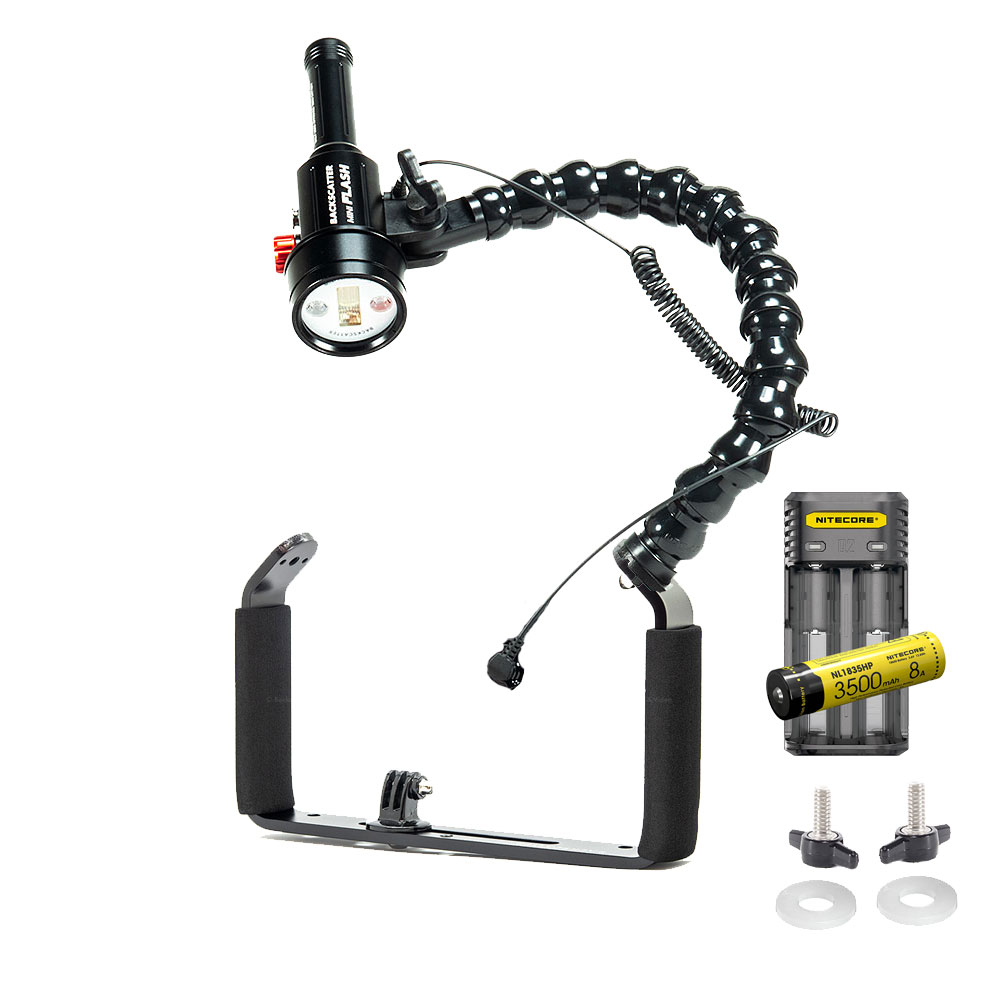Navigation
Scuba Diving Masks
A scuba diving mask (not swimming goggles) is an essential piece of equipment for any diver. Masks are usually sold as being one size fits all faces. All masks differ in size depending on brand and style within the brand and thus some will achieve a better fit on your face than others. The main variable in this sizing is your head size and face shape. As this is so individual to every person we cannot offer any guaranteed sizing advise. However, in the mask descriptions we have tried to indicate if each mask is more suited to petite, small, medium or large faces. But there are no easy rules to follow. Sometimes a mask that seems more suited to a small face works well on a big face. Generally, the more expensive masks have better quality mask skirts and better quality skirts seal on a wider range of face sizes.
The best thing to do is try the mask on your face and check how well it seals. For details about How to Quickly Check a Scuba Mask for Fit please read our Buyers Guide: Buying a Great Dive Mask.
Prescription/Corrective Lens Diving Masks: Eager to try scuba diving, but feel worried about the practicality of it because of your eyesight? If you wear glasses and need some assistance seeing clearly when diving or snorkelling, The Scuba Doctor is Australia's largest supplier of Prescription Lens Masks.
Technical Tip
Why Black Skirt Diving and Snorkelling Masks Are Better
Clear skirts on diving and snorkelling masks are popular because they minimise the claustrophobic feeling some people get when they wear a mask. Nevertheless, clear skirts actually interfere with vision. Extraneous light entering through the clear skirt makes it more difficult for the eye to focus and causes reflections that obscure vision. Demonstrate this by looking out a window from a lighted room at twilight. You will see better by cupping your hands around your eyes as you press your face to the window. For these reasons, knowledgeable divers and snorkellers seeking the best possible vision prefer masks with black skirts.
Note: Diving/snorkelling masks are very different to Swimming Goggles. See Goggles vs Masks.
Full Face Snorkel Mask Dangers
The Scuba Doctor doesn't sell full face snorkel masks because we think they're dangerous. Here's why...
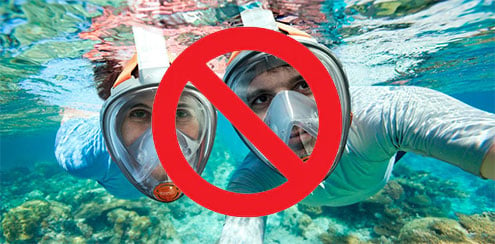
Full face snorkel masks cover the entire face, allowing snorkellers to breathe out of their nose and mouth. They first appeared on the market worldwide in May 2014.
Full face snorkelling masks are designed for easy surface snorkelling recreational use which means you are just floating on the surface and looking down at the fish and other marine life, not swimming. If you need to swim against waves, currents, or intensively for any reason, you should use a traditional mask and snorkel.
Full face snorkelling masks are not designed for leaving the surface to dive underwater, freediving, spearfishing, extensive open water swimming, or swim practice. Soon enough you will feel like you can't catch your breath. This is due to the CO2 build up in the full face mask while you exhaust yourself. If you experience any difficulty, or find your breathing heavy, remove the full face snorkelling mask immediately.
For trusted advice as to what mask and snorkel you can buy that won't try to kill you, please see What Snorkelling Gear Do You Need.
[ Top ]
Full Face Snorkelling Mask Testing
There are no specific standards for the testing of full-face snorkel masks. Some manufacturers have claimed their full face snorkelling masks pass the European standards:
- EN 16805 — Diving equipment - Diving mask - Requirements and test methods; and
- EN 1972 — Diving equipment - Snorkels - Requirements and test methods.
Some manufacturers say they have also done testing referencing the European standards:
- EN 250 — Respiratory equipment — Open-circuit self-contained compressed air diving apparatus — Requirements, testing and marking;
- EN 14143 — Respiratory equipment — Self-contained re-breathing diving apparatus; and
- EN 136 — Respiratory protective devices - Full face masks - Requirements, testing, marking.
These are not standards for full face snorkelling masks, but for separate masks and snorkels, scuba regulators, rebreathers, and full-face scuba diving masks.
Please keep in mind that the vast majority of cheap copy full face snorkelling mask designs have undergone absolutely no standards compliant testing. So how safe or unsafe they are is a total unknown.
The manufacturers who have done testing say there is no risk if used according to the instructions. But in practice, that's not going to happen. People simply don't read the instructions, or ignore the instructions, and then use these masks dangerously. People use the product as they think it can be used, or as they've seen them being used incorrectly in advertising.
A full face snorkel mask is dangerous if it is fake, does not have a patented design, doesn't fit properly, and isn't used correctly. That's just too many things that have to go right, so please Don't Risk It!
[ Top ]
Dead Space! CO2 Build Up!
When we breath in and out we humans produce carbon dioxide (CO2). When we do an activity which exerts us, our body needs more oxygen to keep our muscles working, and therefore our breathing becomes faster. At the same time we breath shallower which creates a problem. Exhaled air contains more CO2 than the air we inhale. If we do this in a closed space, like a full face snorkel mask, we won't exhale deeply enough to push all the bad air out. It's like breathing in a closed bag where the CO2 keeps on building until it becomes very toxic. If you breathe in used air full of CO2 it leads to headache, dizziness, and unconsciousness. That's bad!
Now some of the designers of full face snorkel masks say they have taken this into account. Their full face snorkelling masks have a "breathing part" and a "looking part". The breathing part is located near the mouth and looks a lot like an oxygen mask. This part seals the mouth and nose off from the rest of the mask. On the top of the breathing part are little valves which are designed to only let in fresh air and prevent any bad CO2 rich air escape to the looking part of the mask. The bad air is forced to the lower part of the breathing part and flows to and out of the snorkel on the sides of the mask.
You Can't Trust That It Will Work
In some cheap, poorly made and bad fitting full face snorkelling masks the mechanism as described above simply doesn't work. It could be that the valves are faulty and don't work, or the breathing part has a poor fit. The result is that bad CO2 rich air leaks down the sides of the mask.
Even if the full face snorkelling mask has been designed well, and made from quality materials, it won't work as designed if it's not properly cleaned and maintained. Poor maintenance could kill you or your loved one!
[ Top ]
Correct Fit Is Vitally Important
Most manufacturers of full face snorkel mask offer them in multiple sizes. Having the correct size and fit is extremely important. If your facial config does not fit the nose/mouth enclosure completely and seal properly, that will lead to you breathing from the whole mask volume. This means a relatively large portion of the exhalation will be inhaled again, meaning more deadly CO2 with every breath.
Fogging Is A Warning Sign
The supporters of full face snorkel masks say that you need to ensure the breathing part fits neatly over your nose and as close to your face as possible. When you put on the full face snorkelling mask and breathe using it, only the breathing part should fog up. The looking part should stay clear of any fog. Fogging of the looking part is a danger sign.
Stay On The Surface
Never dive underwater with full face snorkelling masks! Yes, you often see photos of people diving underwater with them. Worse, the companies that want to sell the masks use these type of pictures. But this is highly dangerous — they can be used on the surface only.
With most full face snorkelling masks you can't equalise by blowing hard and long against pinched nostrils as you descend underwater. Thus you may rupture the round window membrane between your middle and inner ears.
The "mask squeeze" (pressure) is much greater than with a traditional dive mask — because of the greater surface area and interior volume. That pressure can contort the mask/face seal and allow water to breach the seal and flood the full face snorkelling mask. This is not something you'd want to deal with at depth, especially given it's difficult to remove the mask, and you can't easily clear it like you can a traditional mask.
Freedivers and spearfishers who apnea dive underwater on one breath prefer very low volume, close-to-the-eyes masks. Many recreational scuba divers also prefer low volume masks, as do most deep technical and cave divers. A full face snorkel mask is an extremely high volume mask, not suitable for use underwater. Experienced one breath apnea divers also prefer a simple, wide, short, open-end snorkel with no bells and whistles of any kind. A hole at one end and a mouthpiece at the other end. Suck, blow, keep it simple! Full face snorkel masks have a very complicated snorkel arrangement.
The additional physical exertion of holding ones breath and diving down can lead to increased CO2 build-up. You don't want to add this to the inherent problems of CO2 build-up with full face snorkelling masks.
Other Dangers of Full Face Snorkel Masks
The tighter fitting head straps of full face snorkelling masks make them harder to pull off in an emergency. That's not good, and when combined with carbon dioxide build-up causing snorkellers to become dizzy or disoriented, it becomes a potentially lethal combination. It also makes it impossible to clear the mask when it floods.
Some people have reported that their face area heats up when using full face masks, plus that the masks gave them a feeling of claustrophobia. That's not good!
Full face snorkel mask are not suitable for swimming. They are designed and intended to be used by a fairly inactive snorkeller without exertion. As soon as a heavy exertion begins demanding air exchange then it gets concerning. Yet we see them being promoted and used by active snorkellers, and worse still, swimmers! Some dangerously promote them for swim training. We think using them in this way makes you a candidate for the Darwin Awards.
Many people who are buying or renting these full face snorkel masks are inexperienced snorkellers, not familiar with the fast-changing weather and water conditions. Beginner snorkellers are more prone to panic or hyper-ventilate in the water. Combining these factors with the problems associated with full face snorkelling masks is dangerous.
[ Top ]
Quality Products vs Cheap Copies
There are a few manufacturers who have put a lot of time and hard work into developing their own design of full face snorkelling mask. They have used their experience with other water sports products to try and produce a safe, quality product. They know and understand the limitations of their products and market them accordingly.
However, full face snorkel masks quickly proved to be a huge success in the marketplace. Thus others have come along wanting to cash in on that success. They often promote the masks as being capable of being used in ways they were not intended to be used.
These "knock-off" versions have typically been produced without an understanding of, or non-adherence to, the original design principles. Many of the copies are dangerous because of those design flaws, primarily related to inadequately eliminating carbon dioxide build up.
To say the quality of most of the cheap imports is poor is an understatement. The snorkel float gets stuck in the tube cutting off air, or masks leak in joins because the pieces don't fit together properly, and snorkel pieces break when connecting or disconnecting. These issues are all due to these products being made with inferior quality materials and poor tolerances.
Masks will also feel really uncomfortable and leak if the silicone is a low grade and doesn't have the flexibility needed to give a good seal. Often, in order to create a reasonable seal with cheap masks, users will over-tighten the straps. This can cause rubbing on the face or the bridge of the nose and will really take the pleasure out of snorkelling.
We strongly advise you not to risk you life with any of the full face snorkelling masks, but especially not any of the cheap, low quality copies.
How To Use a Full Face Snorkelling Mask Correctly?
Full face snorkel masks are intended to be used for easy surface snorkelling only! This means you are just floating on the surface looking down, not actively swimming around. If you need to swim around, please use normal snorkelling gear. If you experience any difficulty, or find your breathing heavy, remove the full face snorkelling mask immediately.
Never dive underwater with full face snorkelling masks! You often see photos of people diving underwater with them. The companies that want to sell the masks use these type of pictures. This is highly dangerous. Full face snorkelling masks are intended to be used on the surface only.
To have a pleasant, safe experience when snorkelling, follow the basic rules of safe snorkelling and use a traditional mask and snorkel.
[ Top ]
What To Do With A Full Face Snorkelling Mask
If you already have a full face snorkelling mask, we recommend you smash it up (so it can't be a danger to others) and put it in the bin. Then get a traditional mask and snorkel combo! We have them for Adults and Kids.
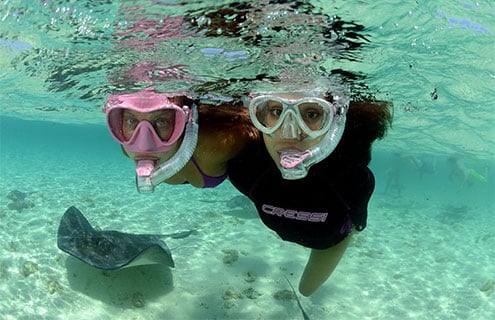
Use a traditional mask and snorkel.
Problems in Maui
We were contacted in December 2019 about problems someone had using one of these full face snorkelling masks in Maui, Hawaii.
I've just returned back to mainland USA from Maui. I rented full face masks for some of the family. My wife suffered respiratory arrest and cardiac difficulties requiring CPR on the beach. No history of heart, lung or any disease. No medications. Mild swimming for 15 minutes and no diving.
Got her back and, after stay in hospital, we are back stateside. My wife is an accomplished swimmer and does water Aerobics three times weekly. I am a medic and fire fighter. Had I not been there she would be dead.
The shop we rented from said that thirty percent of those renting have difficulty.
With an incident rate that high, one wonders why the shop is still renting them. Does profit making top duty of customer care?
Snorkel Safely
Remember, snorkelling is a sport and you need to be physically prepared for it. Check the weather/water conditions prior to snorkelling, and listen to your body. If you are not feeling well, don't go snorkelling. Don't snorkel alone. Despite all of the risks, snorkelling is a safe, easy and wonderful way of discovering our oceans if you follow some simple safety rules. See Snorkelling Limits and Safety Precautions
If you don't have your own snorkelling gear yet, or think you need to upgrade some of it, please take a look at our Snorkelling Guides in the Trusted Snorkelling Advice section of this website. Please also check the great range of Snorkelling Gear in our online shop.
For information about properly looking after your snorkelling gear, please see Equipment Care and Maintenance.
If you want go snorkelling to see the underwater wonders near Melbourne, please take a look at Snorkelling in Melbourne, and Melbourne Snorkelling Sites.
Questions People Ask Us About Full Face Snorkelling Masks
- Are full face snorkelling masks dangerous?
- Yes, they are deadly dangerous! CO2 can build up with these devices and put you in a very dangerous situation. There have been deaths, and many near death experiences.
- Can you breathe underwater with a full face snorkel mask?
- No, you can't breathe underwater with any snorkel. You can have your face underwater and breathe so long as the snorkel end is above the surface. Once the snorkel is below the surface you can't breathe, you must breath hold.
- Are full face snorkel masks better?
- No, in our opinion they are deadly dangerous. A traditional mask and snorkel is better, and much safer.
- Are full face snorkel masks safe for kids?
- No, they are not safe for children. Even if they fit properly, the changes are high that kids will use these full face snorkelling masks incorrectly, and thus put themselves in danger.
- Can you drown while using a full face snorkelling mask?
- Yes, you can, and the chances are higher. If the full face snorkelling mask floods it's hard to clear. It's very easy to clear a traditional mask. It's also much harder to remove a full face snorkelling mask when you're in a difficult situation.
- How long can you breathe underwater with a full face snorkel mask?
- You can't breathe underwater with a full face snorkelling mask. Plus, very few full face snorkelling masks are designed to be used underwater. They are only intended to be used on the surface. You shouldn't be doing any one breath apnea diving with a full face snorkelling mask.
- How deep can you go with a full face snorkel mask?
- You shouldn't leave the surface when using a full face snorkelling mask. They are designed for use on the surface only, not for use underwater, or one breath apnea freediving. The "mask squeeze" pressure is much greater because of the larger volume of air inside the cavity of a full face snorkelling mask, plus the larger surface area creates extra pressure on your face. You can't clear a full face snorkelling mask if it floods, and it's hard to remove it you get into difficulties.
- Can you dive down with full face snorkel mask?
- You cannot one breath apnea freedive wearing a full-face snorkelling mask. With most full face snorkelling masks you can't equalise by blowing hard and long against pinched nostrils as you descend underwater. Thus you may rupture the round window membrane between your middle and inner ears. Plus the "mask squeeze" will be too much, and you can't clear the mask if it floods.
- Can you swim with a full face snorkelling mask?
- No, full face snorkel mask are not suitable for swimming. They are designed and intended to be used by a fairly inactive snorkeller without exertion, on the surface. As soon as heavy exertion begins demanding air exchange then the problems with CO2 build up get very concerning very quickly.
See also, Scorkl Dangers.

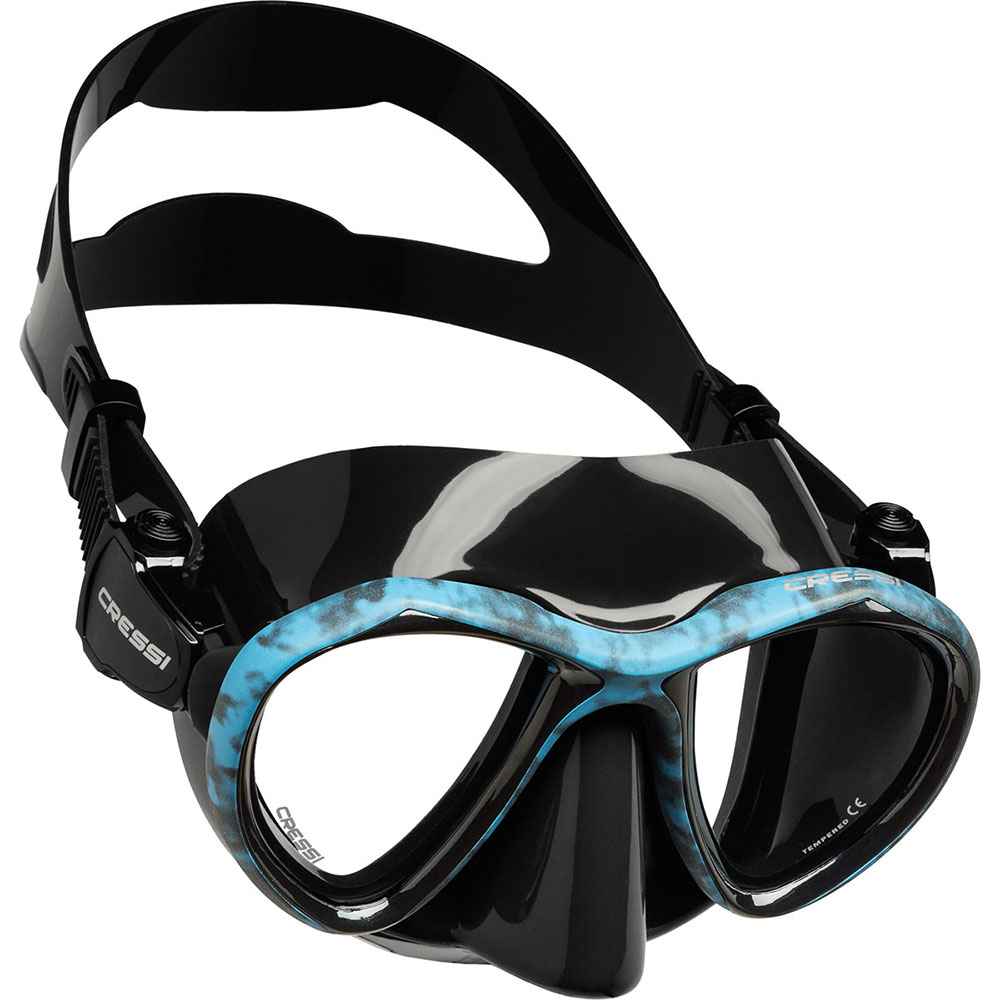
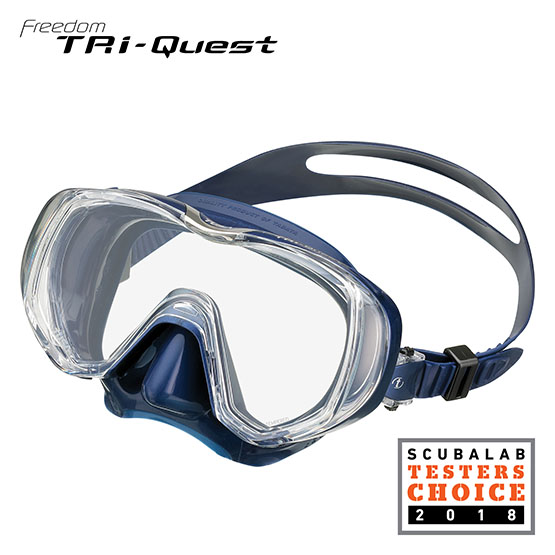
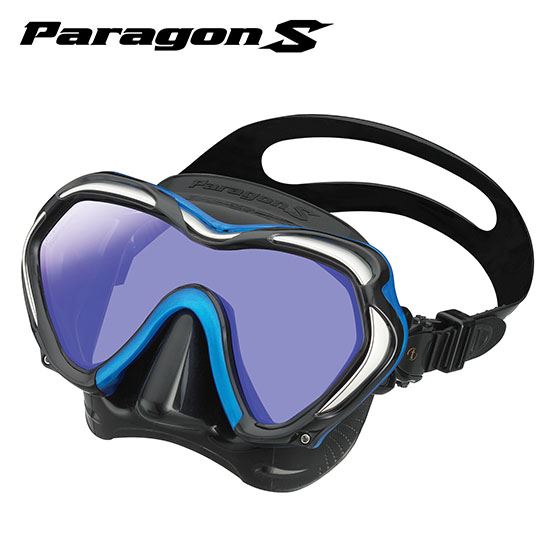
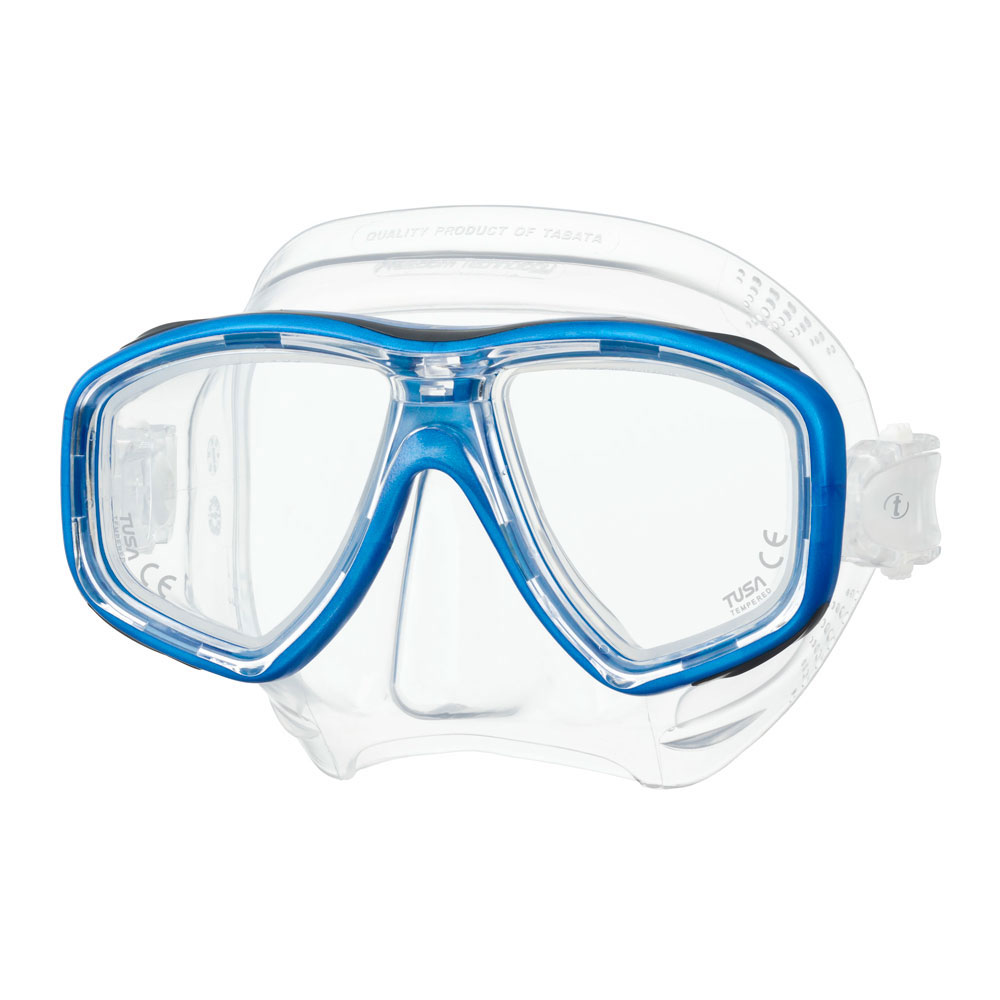
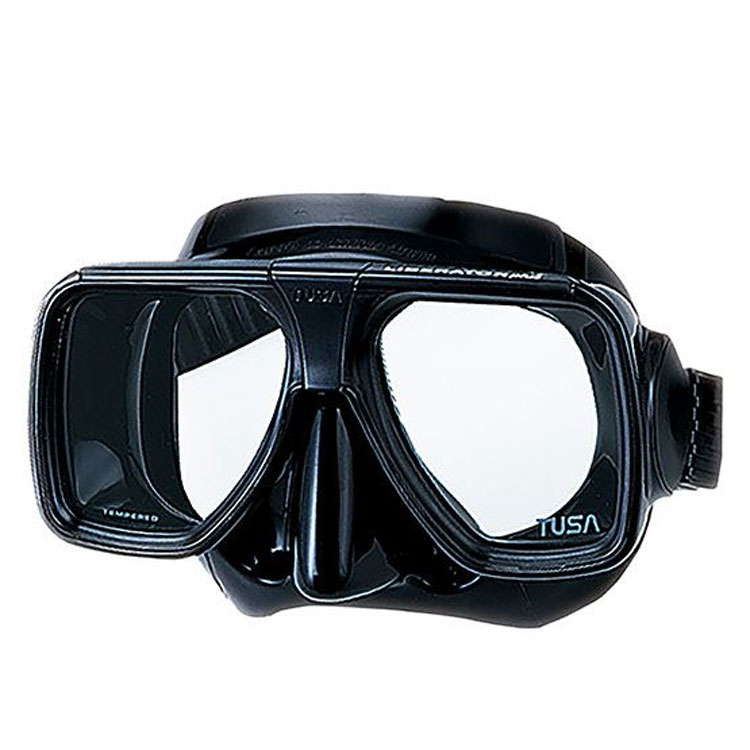
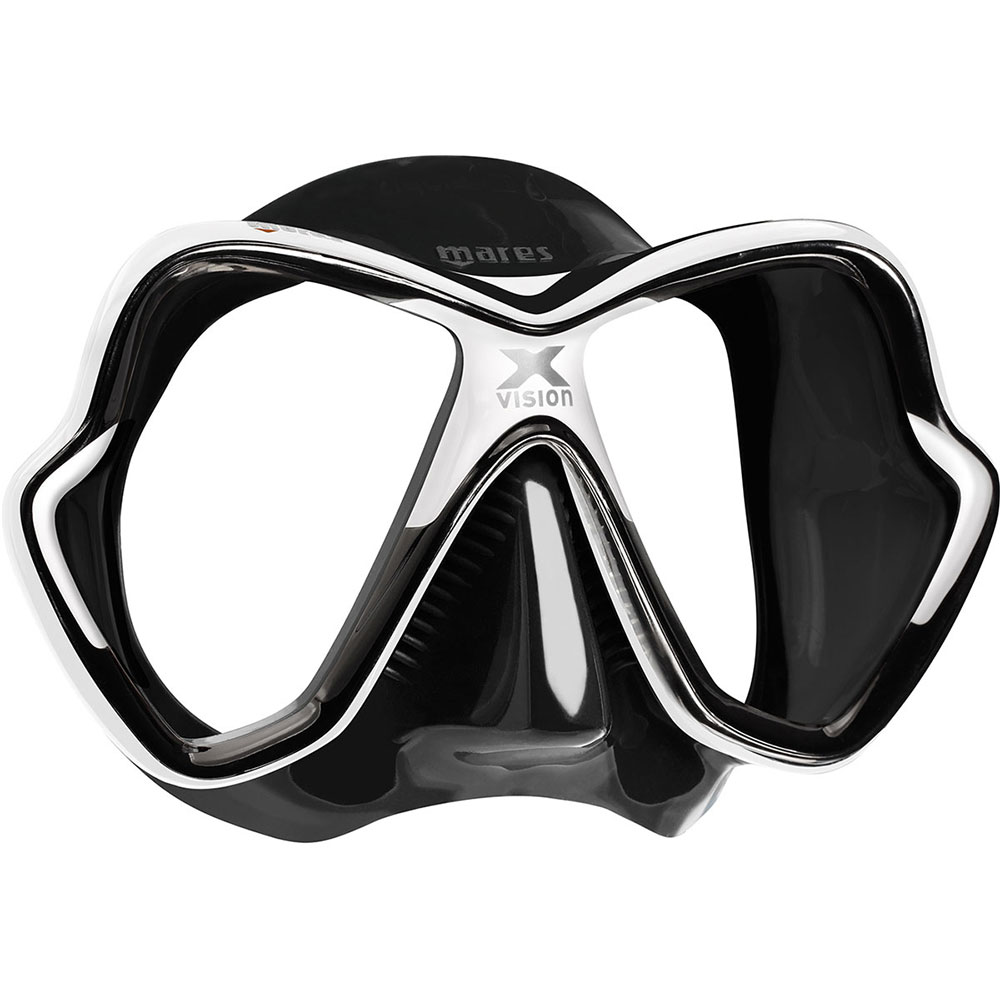
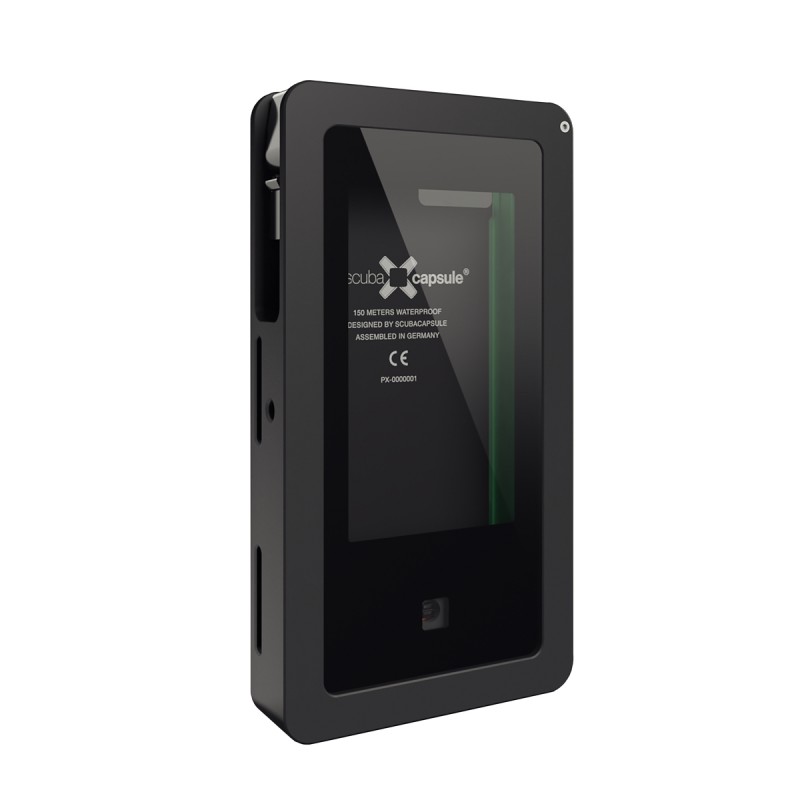
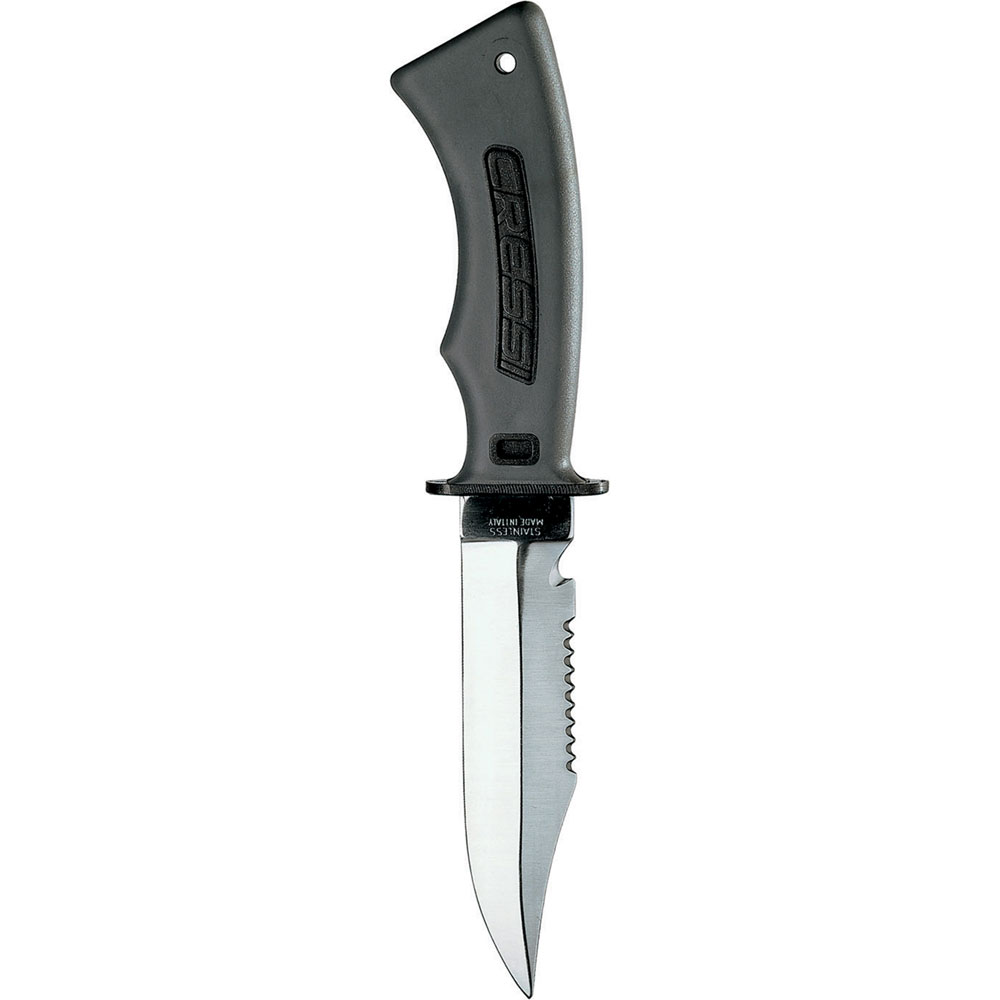
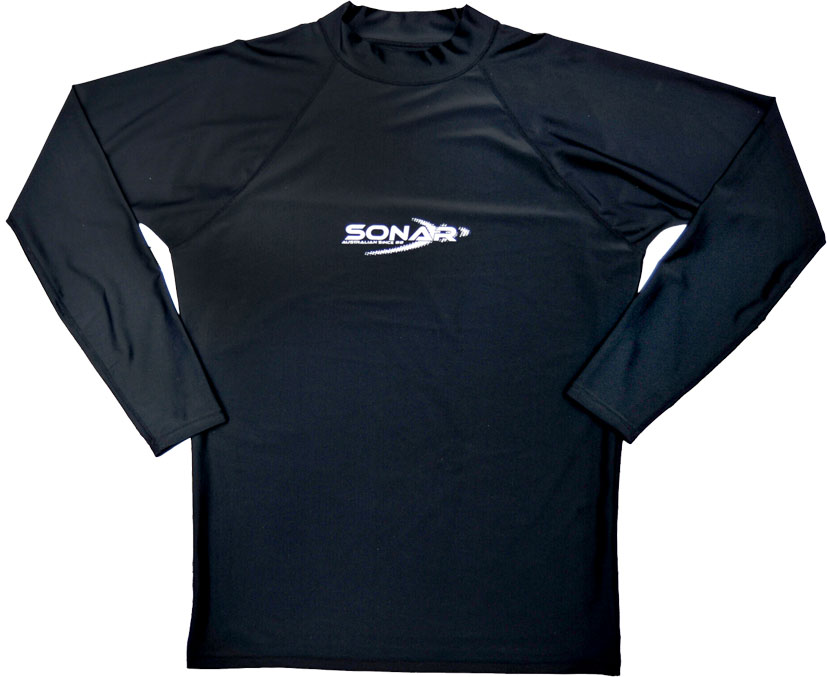
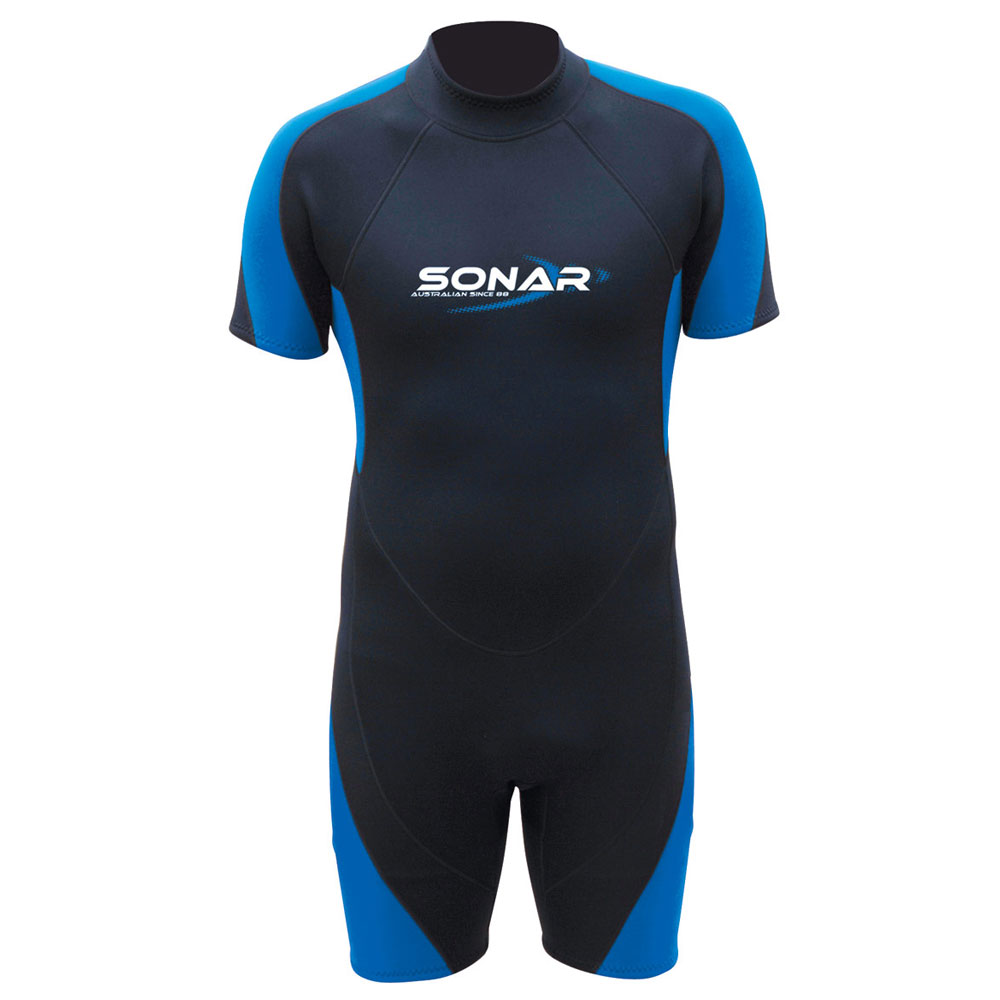
![Halcyon Infinity 30lb System [SS Small Backplate] Halcyon Infinity 30lb System [SS Small Backplate]](/diveshop/images/halcyon/Halcyon-Evolve-Wing.jpg)






